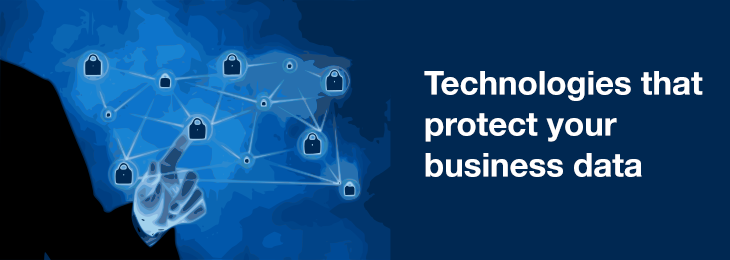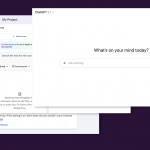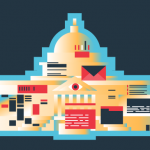
Today’s organizations hold extremely sensitive information in their workstations. From passwords to personal emails, financial records, customer databases, an external attacker, a malicious employee or even an innocent, but negligent employee, are able to leak sensitive data and condemn the organization to failure, if proper solutions are not implemented.
While DLP is crucial to prevent such incidents from happening and cannot be replaced, it can be used with other complementary technologies so that it will improve overall data security.
1. Encryption
By encrypting files or emails, you will make sure that they are protected from unwanted access. If you use encryption, all your confidential information will be safe even if you decide to move it to a different device.
For example, EasyLock is a cross-platform data encryption solution that is going to help you secure all of your data, whether you store it on a HDD, want to move it to Dropbox or burn it on a CD/DVD.
When you go to a meeting and you bring confidential information on a USB stick, you want to make sure that it stays that way. EasyLock will create an encrypted area wherever you want to have your important information. Moreover, you can use it on Mac, Windows, or Linux.
2. Secure file sharing
Chances are that the majority of today’s big and small businesses use a secure file sharing service. It’s a convenient and easy way for people who work for the same company to have and share access to files and documents.
Make sure to choose a cloud-based solution that has a data loss prevention policy and is able to transfer large files in a secure way. Also, make sure that these files will be scanned by an antivirus.
A platform like this is going to ensure that those confidential files are not going to be shared with a third party that is not permitted to see them.
3. Mobile device management
Nowadays, we tend to use mobile devices more than we used to a few years ago. Some of us use only mobile devices, and for many of us iPads are sufficient tools that successfully replace PCs in daily tasks. We’re constantly on the go, travelling or going to meetings, so it has become more convenient for us to carry a tablet or our smartphone for simple tasks like checking email or reviewing documents.
If you or your employees use mobile devices quite often, then you should consider enrolling them in MDM. For iOS and Android it is quite easy to find a suitable MDM or EMM solution, being the most popular mobile platforms. You can read our eBook on protecting data residing on employees’ smartphones and tables to find out more about the BYOD trend and what to consider when implementing Mobile Device Management.
4. Information rights management
Information rights management (IRM) technology was born as an extension to copyright protection and it protects sensitive information from unauthorized access. Since the creation of digital content (whether it’s written or visual) has grown intensively over the past years, the need for such a technology was definitely there.
The information rights management technology uses encryption to prevent access from an unauthorized source. It focuses on making sure that documents or emails, which are being remotely controlled, will not be viewed, edited, created or shared by someone who shouldn’t have access to confidential information such as financial data or intellectual property.
5. Role-based access control
With this technology, you are able to allow access to confidential information based on certain employee roles. Every employee has certain roles defined by his/her job and certain competencies, authority or responsibilities that allow him / her to view, create, share or modify a document.
As the name shows, RBAC is made so that it works with roles, which makes it very easy for authorized people to get access when needed.
A role-based technology has the advantages of being very flexible and it can be easily controlled. The good news is that the administrator doesn’t have to make changes for every single user. They will only need to create new roles or modify existing ones, according to the evolution of the company.
Data Loss Prevention goes hand in hand with these technologies
When it comes to data loss prevention, it’s better to be safer sooner than sorry later. There are several options out there as for the functionalities and implementation types, so an analysis of your infrastructure and business needs should be done before jumping into selecting a solution. It’s important to know what type of information you want to protect, what resources you have for supporting DLP, what operating systems exist in the network, and the list can go on. In any case, DLP is a must for protecting data against insider threats, and it’s the number one solution to show complete visibility into data transfers.
Download our free ebook on
Data Loss Prevention Best Practices
Helping IT Managers, IT Administrators and data security staff understand the concept and purpose of DLP and how to easily implement it.
















